
Young Adonis easily take root, especially if well dug, so fans can appear a variety of species.
As suitable for our gardens can be noted A. chrysocyathus-up to 40 cm tall, with a powerful caudex (part of the transition from root to stem) and complex dissected leaves, and basal on such long stalks that almost longer than the stems. Flowers up to 5 cm in diameter. Grows in the mountain steppes on fertile soils in the Himalayas, Tien Shan.
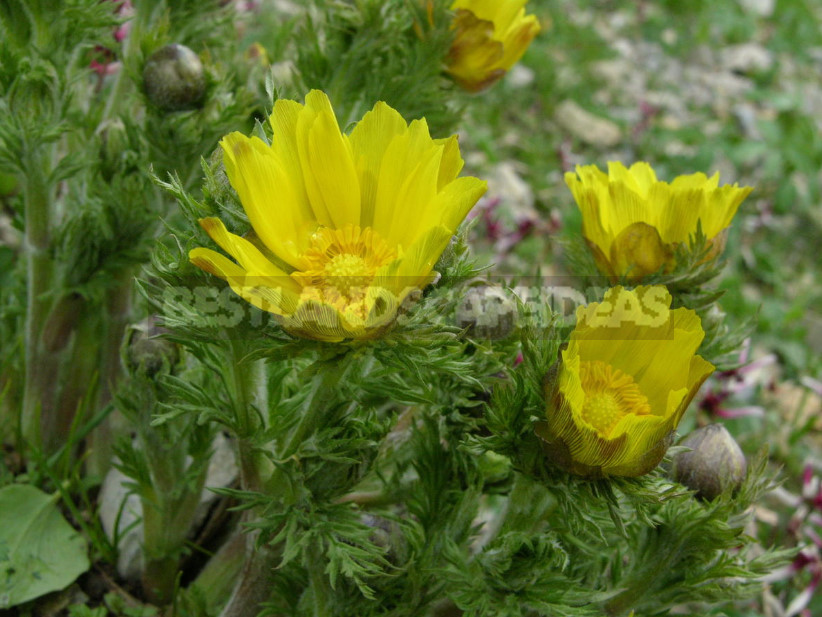
Stems branched, covered with sessile leaves. Yellow flowers are standard. Occurs in the mountains of Central Asia (above 2000 m) among grasses on fertile soils.
Lives and A. villosa from East Kazakhstan and South Western Siberia. It lives in steppes and semi-deserts with severe continental climate on chernozems and dark chestnut soils.
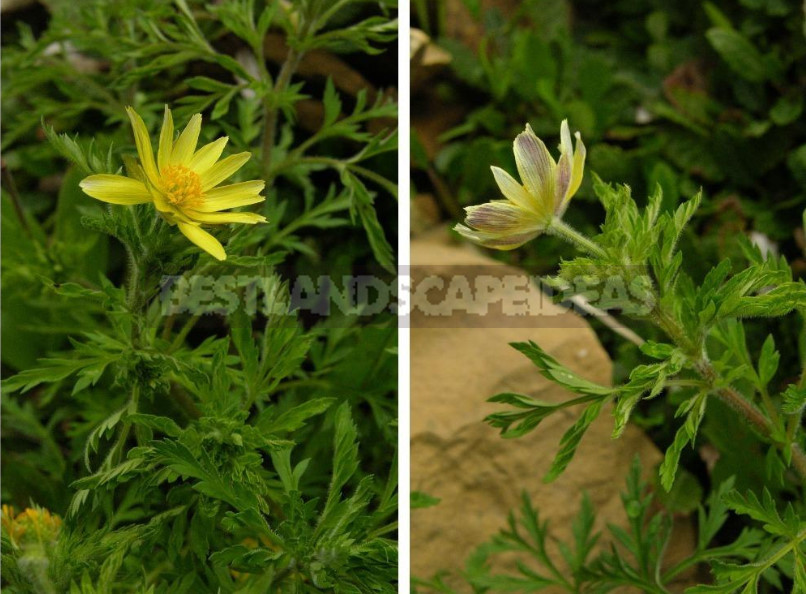
Original white and blue Adonis
A. coerulea – up to 15 cm tall, with small (up to 2 cm in diameter) bluish or lilac flowers and narrow openwork leaves on long stalks. Sits high in the Tibetan mountains in China, on rocks and rocky talus with fertile clays.
A. brevistyla-strongly branched, up to 50 cm tall. The leaves are large, with triangular in shape plates. Flowers up to 3 cm in diameter, white with a lilac tinge on the outside. Occurs in meadows and edges in Tibet.
The other extreme prefers A. mongolica with large white flowers from the forest-steppe of Mongolia. For the settlement chooses loose sandy loam and chestnut soils in river valleys and westerns in the lower part of the hills. Here reigns a sharply continental climate with clear dry and frosty winters and hot summers, low rainfall-300 mm.
Growing Adonis
All of these species in the General sale somehow not marked, and the reasons are obvious: problems with seed reproduction and slow development, which does not allow to divide the bushes annually. The seeds remain viable for up to a year, but fresh, seeded 2-3 weeks after ripening germinate better. Seedlings appear after 1.5-2 months or in the spring (with late sowing) in unpredictable quantities. Having some problems with the formation, the seeds sometimes turn out quite dissimilar, and sometimes – germinate, but bad. Seeding is rarely completely successful.
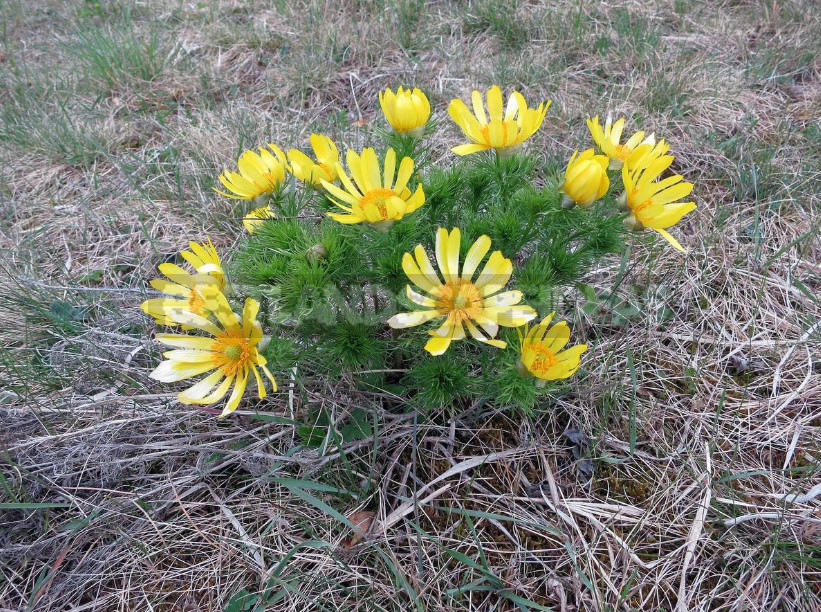
In the culture of Adonis vernalis can bloom for 3-5 years (for comparison, in nature – 7-12), but this maturity reaches 6-7 years (in nature – to 40-50 years, and all lives, if anyone is interested, at least 150 years).
Adonis amurensis
Only one perennial, a small ephemeroid from the Far East, China and Japan is relatively common in catalogs – A. amurensis.
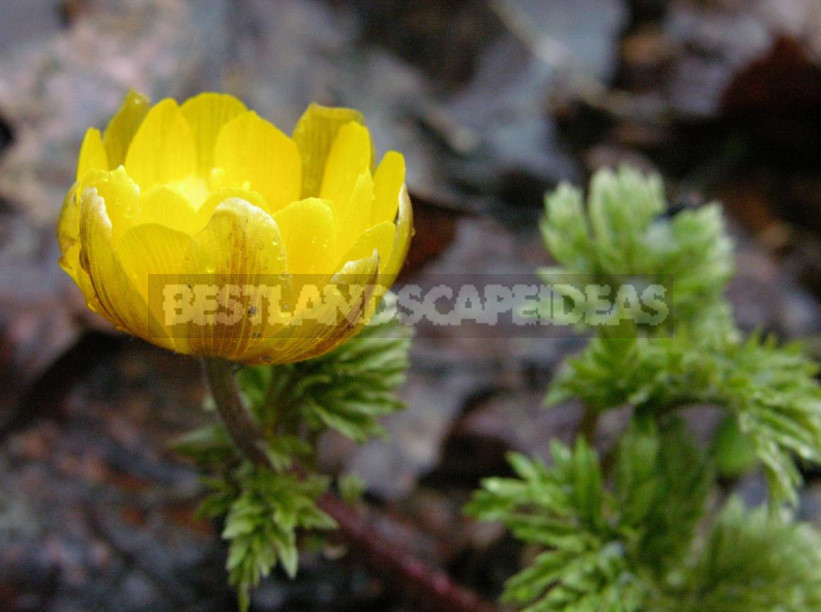
It has the same problems with seeds as other perennials, but it is easier to share, having a kind of segmented rhizome. It grows on forest glades, clearings, near streams, i.e. in a relatively shady and moist habitats.
This is a favorite plant in Japan, symbolizing the arrival of spring, whose image can be seen in the paintings, fans, dishes. Its local name is composed of hieroglyphs meaning “prosperity” and “longevity” — that is, it unites all the components of complete personal happiness.
By nature, this is a true snowdrop, which blooms over the patches of undisturbed snow. Each short stem makes a single large yellow flower. After lightning flowering vegetative shoots unfold with 2-3 dissected leaves, forming a compact lush Bush. In June, the plant dies, scattering the seeds, only under the ground remains a thick rhizome, ready for new exploits next spring.
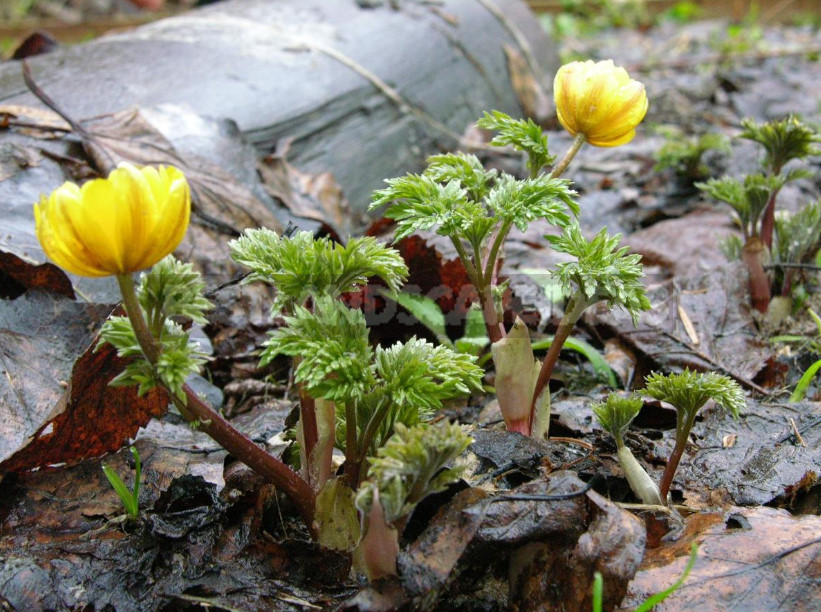
Of the Japanese varieties there were in Europe Terry. Known ‘Floro Plena’ with a dense greenish pompom in the center and ‘Pleniflora’ — completely Golden. ‘Fukujukai’, or ‘Fukijukai’ (actually, the Japanese name of the species) — early flowering variety. ‘Sandanzaki’ distinguishes Terry loose flower with greenish tips of petals. However, there are different versions of the descriptions of these varieties. ‘Beninadeshiko’ has simple flowers, but orange in color. Known varieties of lemon color.
Flower of legend
Usually, talking about Adonis, remember the Greek legend of Adonis, the beautiful favorite of Aphrodite, constipated boar. Like, from his blood the flower grew. Looking for Golden flowers our darling of gorizontov, wonder. Everything becomes clear when you know that the type of genus, that is, its exemplary representative, which compare the rest for kinship, Carl Linnaeus chose a plant with a flower of red, bloody color. It is called Adonis, particularly A. annua. This cheerful annual mid-summer, 30-40 cm tall, with bright fresh green leaves thinly dissected and small flowers. Its seeds are sold sometimes called A. autumnalis, which is considered synonymous in horticulture, and in botany – no.
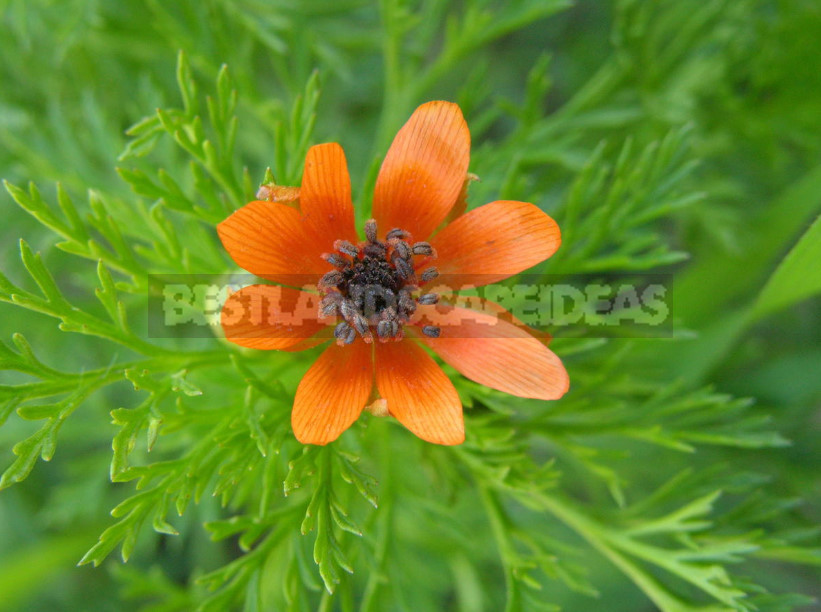
Another selling annuals-A. aestivalis, which blooms in the spring. Terms of flowering in catalogs often indicate different, and when you consider that these species differ in small details of the structure of the fruit, and in addition to the named, allocate almost a dozen of the same little red, it is difficult to say that sell in fact in each case.
In Ancient Greece, for the festivals of Adonis, young women grew portable “Adonis gardens” in baskets and pots. There were wheat, lettuce, fennel, and annuals, perhaps the same Adonis. They grew quickly and bent just as quickly, so that on the eighth day of entertainment, these “gardens” were thrown into the sea or river together with the image of the late God. The festivities began on July 19 and lasted 16 days. They were quite indecent for traditional views, because mostly they were attended by strollers and kept women who entertained their fans with singing, dancing and drinking on the roofs, burning spices in honor of Adonis and Aphrodite. But if you do not get involved in unrestrained fun and planting constantly watered, the plants will last longer.

When spring sowing germinate in 1.5 months, but bad. In the autumn part can ascend immediately, but mostly they are waiting for spring. Begin to bloom very early, then branch and develop along the way. One individual blooms about 1.5 months. All life expectancy in nature is estimated at 150-160 days, which corresponds to the legend: Adonis-the young man spends six months on earth, and six months – in the Kingdom of the dead.
For all Adonis is characterized by attachment to loose fertile soils, except that annuals less whimsical. Also, all need drainage, stagnant water, they can not stand and rot. But with respect to lighting and irrigation they have differences.

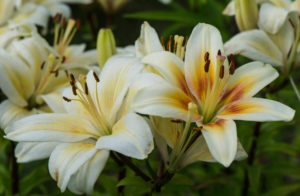
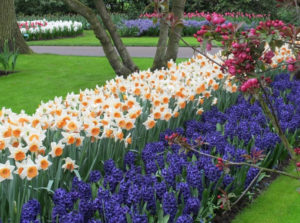
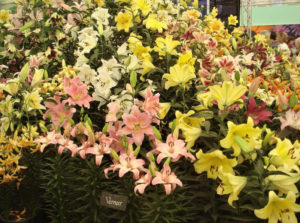
Leave a Reply